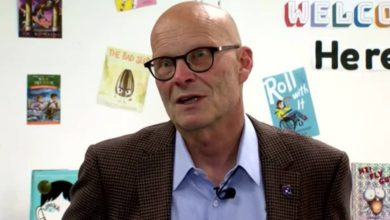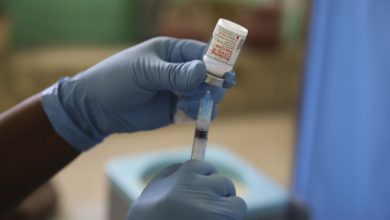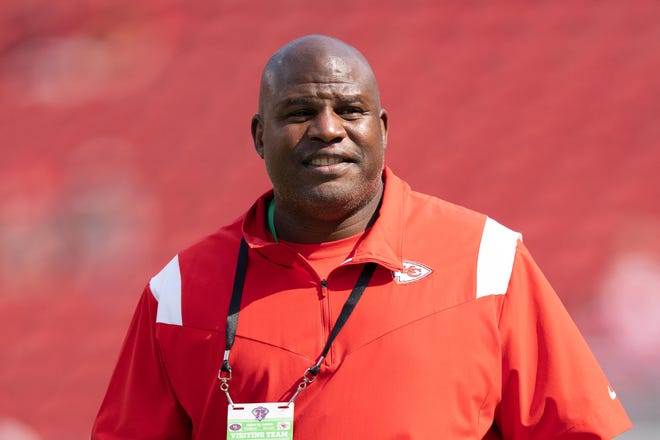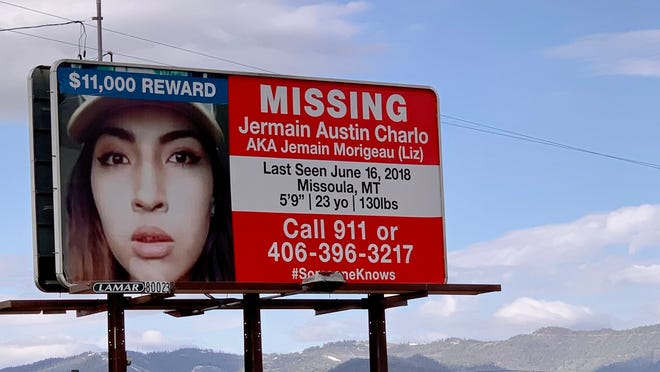

- In the eight days between when Gabby Petito's family reported her missing and when her body was found, three Indigenous people – Sterling Prinze Redstar, Markie Shea Williams and Cloelle Buck Elk – were reported missing in Montana.
- The disproportionately high rates of missing and murdered Indigenous people is a nationwide crisis, and experts say Montana is an epicenter.
- Kimberly Loring HeavyRunner’s sister, Ashley, has been missing from the Blackfeet Reservation since 2017: “I don't understand how to qualify for this kind of mainstream media coverage.”
The story of Gabrielle "Gabby" Petito has swept the country.
USA TODAY. The New York Times. The Washington Post. Fox News. CNN. The nation's major news outlets have all covered her life and dissected her "van life" videos on social media, produced timelines around her disappearance, analyzed police bodycam footage and reports, and devoted daily coverage to the ongoing search for her fiancé Brian Laundrie.
Amateur sleuths can't get enough of the case. The #GabbyPetito hashtag has generated hundreds of millions of posts on TikTok, where true crime-obsessed users have shared updates – some true and others not – and shared their feelings about the case.
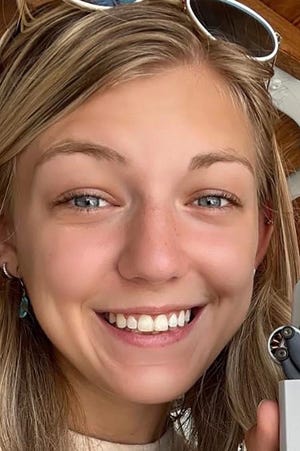
The national attention to her case has stirred public outrage – and that's only grown since her body was found Sunday at a campground near Grand Teton National Park in Wyoming and Laundrie ditched Florida police who have searching all week for him inside a "vast and unforgiving" wilderness park.
We all have a unique perspective: Sign up for This is America, a weekly take on the news from reporters from a range of backgrounds and experiences
While Petito's case continues to unfold under the glare of the national spotlight, thousands of Indigenous people remain without justice.
Indigenous people go missing at disproportionately high rates but are not afforded the same national attention as Petito. They don't argue that Petito's case deserves less furor, but rather that missing Indigenous people deserve equal attention.
Aren't their lives worth it, too?
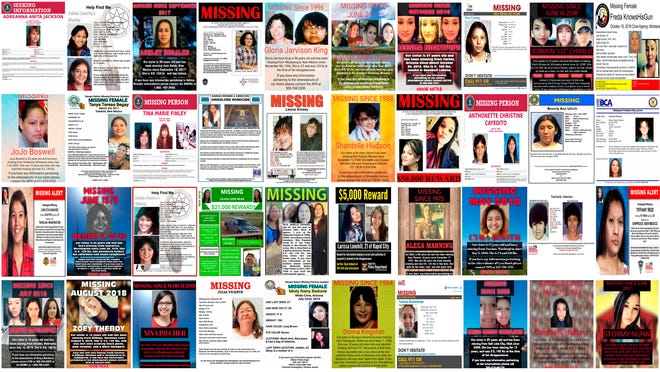
Ashley Loring HeavyRunner. Jermain Charlo. And hundreds more.
In a study that surveyed 71 U.S. cities, the Urban Indian Health Institute in 2016 found there were 5,712 reported cases of missing or murdered Indigenous women and girls. A 2016 National Institute of Justice report found that more than 4 in 5 Indigenous people had experienced violence in their lifetimes.
In Wyoming, where Petito's remains were found, 710 Indigenous people were reported missing between 2011 and 2020.
The disproportionately high rates of missing and murdered Indigenous people is a nationwide crisis, and experts say Montana is an epicenter. Indigenous people in Montana are four times more likely to go missing than non-Native people, according to a state Department of Justice report. As of Sept. 15, Indigenous people accounted for 31% of the state's active missing persons population, though they comprise about 6.7% of Montana's population.

Everyone's talking about Gabby Petito.They're having the wrong conversation, experts say.
In the eight days between when Petito's family reported her missing on Sept. 11 and when her body was found on Sept. 19, three Indigenous people – Sterling Prinze Redstar, Markie Shea Williams and Cloelle Buck Elk – were reported missing in Montana.
But most people don't know their names.
Disparities in Petito's case and the thousands of missing cases of Indigenous people are not just evident in media coverage, but also in public interest and search efforts.
- While images of Petito flood TV and phone screens and show up in newspapers across the country, Jermain Charlo's family erects a billboard with her face on it alongside a Montana highway. Charlo, 23, has been missing since 2018.
- While the FBI searched the Laundrie family home in Florida, the families of Arden Pepion and Leo Wagner organize their own searches. Pepion, 3, and Wagner, 26, disappeared in separate incidents from the Blackfeet Reservation in April.
- While amateur crime sleuths and members of the public volunteered information to assist in Petito's case, Kimberly Loring HeavyRunner, with support from a podcast, offers a $50,000 reward for information on her sister's case. Kimberly's sister, Ashley Loring HeavyRunner, has been missing since 2017.
- While the FBI assisted in Petito's case, Kaysera Stops Pretty Places' family writes letters to law enforcement and politicians, begging for involvement in her case. Kaysera, 18, was found dead in 2019.
- While the Suffolk County Police in New York, North Port Police in Florida and FBI collaborated on Petito's case, Malinda Harris brought suspects in her daughter's murder to the police station herself. Hanna Harris was killed in 2013.
The real-life consequences of 'Missing White Woman Syndrome'
"Missing White Woman Syndrome," a term coined by Gwen Ifill, a former longtime PBS news anchor, refers to the idea that the amount of media coverage a missing person receives is directly tied to his or her demographics and background.
Specifically, Missing White Woman Syndrome explains that missing white women and girls – and especially those who fit traditional beauty standards and who often come from wealthy backgrounds – are overrepresented in media coverage.
Zachary Sommers, a sociologist and criminologist, in 2016 analyzed missing persons news coverage from CNN, the Minneapolis Star Tribune, the Chicago Tribune and the Atlanta Journal-Constitution. He found that missing people of color were substantially underrepresented and missing white women and girls were substantially overrepresented in news coverage.
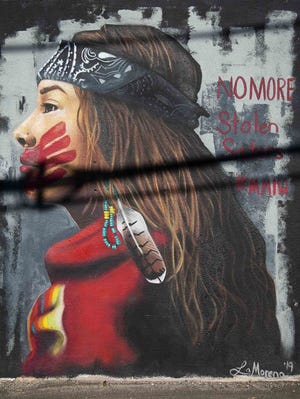
"As a culture, we readily identify with white folks and white individuals who are victims," Sommers told the Great Falls Tribune of the USA TODAY Network. "So we see a white person go missing in a few news stories and we think, 'That could be my cousin or that could be my friend or my co-worker or my brother or my sister.'
'It's pretty damn sad':John Walsh criticizes Florida police investigation of Gabby Petito case
"Whereas, we may have different connotations or associations with people of color. None of this has to be explicitly stated. This all might just be implicit perceptions that we have as a result of structural racism in this country."
Sommers said the consequences of Missing White Woman Syndrome are serious, as more media coverage on a missing persons case can place increased pressure on law enforcement, which may lead to justice in these cases. He also said the disproportionate media attention is harmful, as it implies that some lives are more important than others.
But Sommers made clear that all missing persons cases deserve coverage.
"It's unquestionably a positive thing that Gabby's case got coverage, and Missing White Woman Syndrome and research on it does not suggest otherwise," he said. "It's just saying that we need to expand the pie. It shouldn't just be the Gabbys of the world that are getting this coverage. It shouldn't be a zero-sum game. We need to do better of extending coverage broadly."
Indigenous people call for change: 'We get treated like we aren't human'
Angeline Cheek, Indigenous justice organizer for the ACLU of Montana, said the disparate media coverage is "proof of the racial inequality we have in the U.S."
"It's always been that white people are put on a pedestal. But for us Indigenous people, we get treated like we aren't human. It sends a message to our Indigenous youth that their lives do not matter. Our voices are never heard," she said.
First Nations: Subscribe to the Great Falls Tribune's free weekly newsletter on Montana tribal issues
Kimberly Loring HeavyRunner, whose sister Ashley has been missing from the Blackfeet Reservation since 2017, said the national media attention directed at Petito does not surprise her.
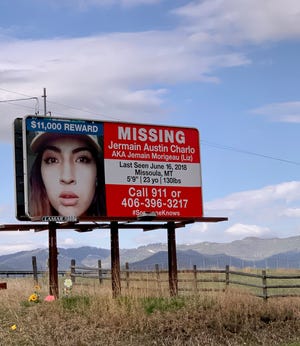
"This is normal when it comes to media coverage. Everyone who goes missing is important, but this is the reality (Indigenous people) live in. I don't understand how to qualify for this kind of mainstream media coverage. I'm not sure how you get this kind of attention. I'm happy that Gabby's family was able to get this attention. I don't feel bitter; I just feel that we need more change," she said.
Candace Lowe-Zamora, a member of the Coyote Valley Band of Pomo Indians, has a feeling she knows how to "qualify" for national media coverage.
"If I go missing, describe me as blonde hair (and) blue eyed (sic)," she tweeted on Monday. "Wearing a brown wig with brown contacts. Maybe that will help find me faster."
When Indigenous people go missing, Lowe-Zamora said there appears to be a tendency within the media and law enforcement to blame the victim.
"They always focus on something negative – like, 'Were they on drugs or drinking alcohol?' And then they say, 'Well, they shouldn't have been doing this or that.' But with Gabby, she was just treated as a victim, as she should be," Lowe-Zamora told the USA TODAY Network. "It just seems like being blonde and blue-eyed is more acceptable in the media."
Do you know where they are? 43 missing persons cases the FBI needs help solving
Verna Volker, founder of Native Women Running, an organization that aims to increase visibility and inspire Indigenous women runners, said the disparate media coverage devalues Native women.
"It saddens me because what does this say about our value in life? We as Native women are mothers, daughters, grandmothers, sisters and aunties. Our lives matter just as much as anyone else's," she said.
"Why aren't they reporting our women when they go missing or are murdered? Is it because we don't look like the typical American girl or how people envision America's daughter? We want that same energy when our women go missing."
Nora Mabie covers Indigenous communities for the Great Falls Tribune. She can be reached at [email protected]. Follow her on Facebook @NoraMabieJournalist or on Twitter @NoraMabie.



